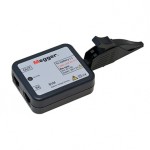The BITE 2 and BITE 2P Impedance Battery Testing Equipment determine the condition of lead-acid and nickel-cadmium cells up to 7000 Ah. An advanced feature set has been developed that includes Pass/Warning/Fail calculations based on a user-entered baseline value, advanced printing functions and more. The case of the BITE 2P consists of both the transmitter and a carrying case for all of the standard accessories and some of the optional accessories, in an all-in-one unit. The BITE 2 and its accessories fit into a sturdy canvas case with a shoulder strap.
The instruments work by applying a test current across the battery string while on-line, then measuring the total current (ac ripple + test current) and the voltage drop of each cell/jar. It then calculates the impedance. They also measure dc voltage and interconnection (strap) resistance to help determine the overall condition of the entire battery string’s electrical path from terminal plate to terminal plate.
The BITE 2 and BITE 2P receiver stores the readings in its internal memory. These measurements, along with other maintenance data such as ambient and pilot cell temperatures and ac ripple current, assist in determining the overall condition of battery systems. Megger recommends that impedance measurements with the BITE 2 or BITE 2P be made part of a battery maintenance program with readings taken and recorded semiannually for flooded batteries and quarterly for VRLA.
Unlike load cycle testing that involves substantial downtime and repeated discharges, using the instruments require no battery discharge, nor do they stress the battery in any way compared to other techniques. With a test time of less than 20 seconds for each cell and intercell connector, one person can easily, quickly, and precisely measure internal cell impedance, dc terminal voltage and intercell connection resistance without taking the battery system off line.
Naturally, everything you need to perform these tests is included with the basic instruments. There is a full line of optional accessories to enhance the capabilities of the BITE 2 and BITE 2P. Both have the ability to download to a PC for data interpretation. Additionally, the BITE 2P has a built-in printer to review the active test but also to leave a hard copy record at the site.
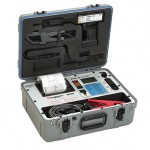
The Megger BITE3 Impedance Battery Testing Equipment determines the health of lead-acid cells up to 2000 Ah by taking measurements of the most important battery parameters. The BITE3 measures cell impedance, an internal ohmic test, cell voltage, intercell connection resistance and ripple current. And, for the first time in a battery instrument, the BITE3 measures float current and the harmonic content of the ripple current. There is even a built-in spectrum analyzer to show the harmonic content of the ripple current. It has firmware that can be upgraded through the Internet and supports multiple languages.
The BITE3 Battery Testing Equipment is one of the easiest instruments to use. Its measurements, along with temp, specific gravity and other battery data, can provide the best basis for evaluating the overall health of batteries from terminal plate to terminal plate and to a lesser extent, the charger (from ripple current and its harmonic content.) Megger recommends that the BITE3 be made part of a comprehensive battery maintenance program with readings taken and recorded semi-annually for flooded, lead-acid cells and quarterly for VRLA.
The BITE3 Battery Testing Equipment is quick, reliable and easy to use. With a rapid test time, one person can easily, quickly and precisely measure cell and string parameters without taking the system off line.
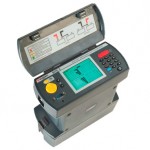
The TORKEL 900 is the fourth generation in the series of Megger’s trusted battery discharge test systems. Discharge testing is the only test method that provides a comprehensive insight into battery capacity, and is therefore an essential part of vigorous battery maintenance programmes.
Tests can be conducted at constant current, constant power, constant resistance or in accordance with a pre-selected load profile. Together with the cell voltage logger, BVM, now connected directly to the TORKEL 900, it becomes a complete stand-alone discharge test system.
The TORKEL is connected to the battery, the discharge current and the alarm levels (voltage, capacity, time) are set. After starting the discharge TORKEL keeps the current constant at the preset level. When the voltage drops to a level slightly above the final voltage, TORKEL issues an alarm. If the voltage drops so low that there is a risk for deep discharging the battery, TORKEL shuts down the test. All values are stored in TORKEL and can easily be transferred via a USB-stick to a PC for evaluation.
Testing can be carried out without disconnecting the battery from the equipment it serves. Via a DC clamp-on ammeter, TORKEL measures total battery current while regulating it at a constant level. Furthermore, the high discharge capacity of TORKEL gives the opportunity to shorten the test time. Discharging can take place at up to 220 A, and if higher current is needed, two or more TORKEL units or extra load units, TXL, can be linked together.
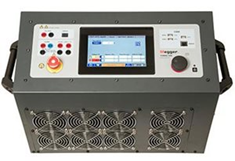
During a power outage, crucial telecommunication and radio equipment must be kept operating by batteries. Unfortunately, however, the capacity of such batteries can drop significantly for a number of reasons before their calculated life expectancy is reached. Battery capacity should thus be checked to prevent expensive downtime in the event of a power failure.
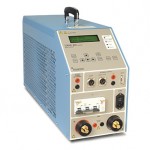
They are designed for use together with TORKEL battery load units. Their purpose is to provide higher load currents for use in constant current or constant power tests. Together, TORKEL and the TXL extra loads form a system that can discharge batteries with currents of up to several kA. TXL extra loads are connected directly to the battery, and TORKEL measures the total current using a clamp-on ammeter.
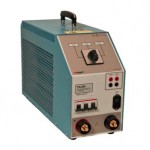
The Battery Ground Fault Tracer is dual range economical, easy-to-use instrument that identifies, traces and locates ground faults in ungrounded dc systems. It is particularly effective in high electrical noise environments, as the strength of the test signal can be adjusted.
The Battery Ground Fault Tracer’s dual range provides added safety in the low range, while the high range offers the ability to locate high impedance faults.
The Battery Ground Fault Tracer accelerates fault location by eliminating trial-and-error procedures and because faults can be located without going off-line. It is particularly useful in any industry where supply of power for operating measurement, communication and control equipment is critical.
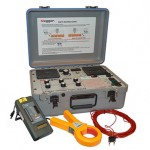
This instrument was developed to detect, track and locate ground faults on battery systems – without resorting to sectionalizing! Model BGL tracks and locates ground faults on live or dead battery systems. To save hours of unnecessary troubleshooting, the BGL readily differentiates between the resistive fault currents and capacitive charging currents. This feature allows the instrument to detect and track leakage paths, even in the presence of surge-suppression capacitors.
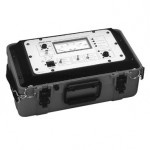
The Megger BVM is a battery voltage measurement device that is used for the capacity testing of large, industrial battery banks commonly found in electrical power sub-stations, telecom facilities and computer data center UPS systems. When used in conjunction with a load device, such as the TORKEL unit, and test data management software, such as PowerDB and TORKEL Win, the BVM enables the user to perform a completely automated battery bank capacity test, according to IEC test method. The test also meets NERC/FERC requirements.
The BVM is designed in modular form where one BVM device is used for each battery or “jar” in the string to be tested. One BVM for each battery connects to the next in a “daisy-chain” fashion, thereby providing easy and economical expandability to meet the testing requirements for small-to-large battery bank systems.
